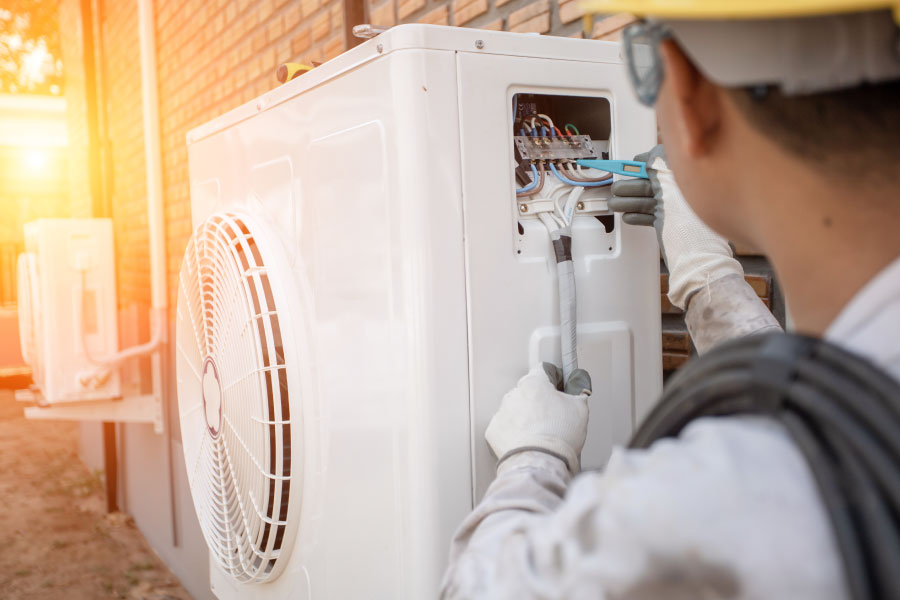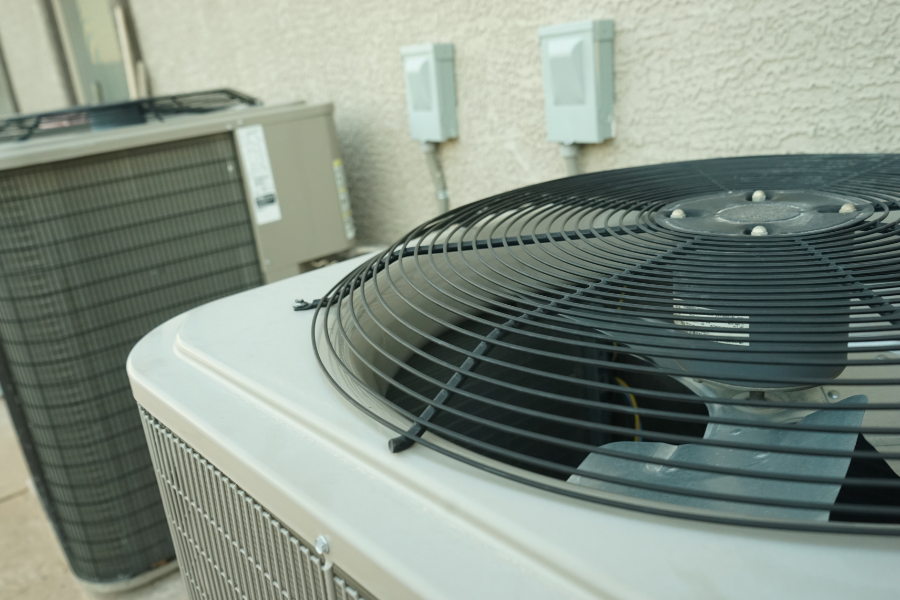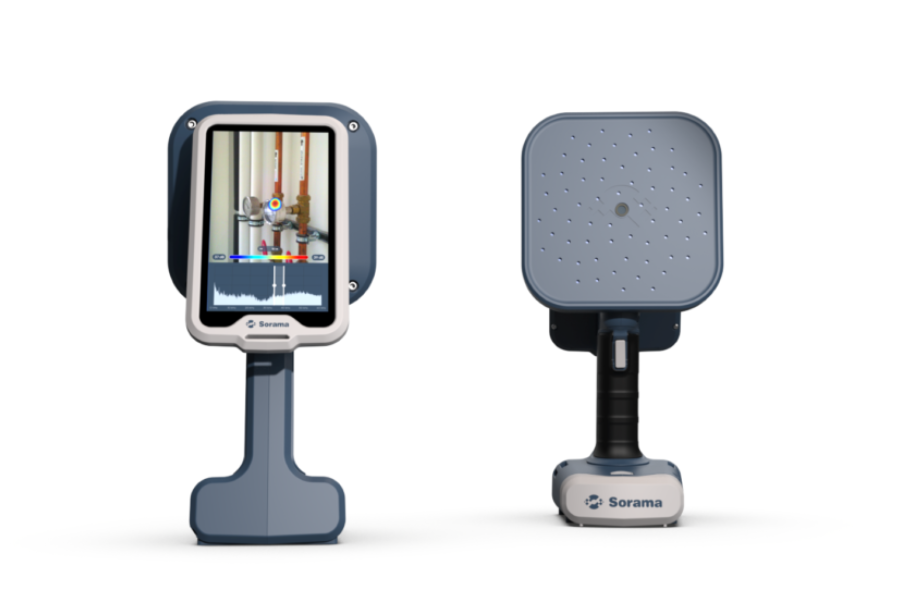Nov 23, 2022
Heat Pumps — States & Others Can’t Pass Up The Chance To Electrify Buildings
Carolyn Fortuna Ph.D. shares thoughts about how heat pumps are very important to have in newer infrastructure and buildings.
By: Carolyn Fortuna

The state of Washington is taking heat pumps seriously.
The state building code council has mandated that, starting in July of 2023, new home construction must use heat pumps for space and water heating. That means heat pumps will soon warm and cool every new house and apartment built in Washington state. That heat pump requirement for new construction is among the nation’s strongest.
In 2021, Washington state legislated that emissions reductions of 45% must take place by 2030 and then of 95% by 2050, as compared with 1990 levels. To that end, the state has set goals to increase energy efficiency in its buildings by 70% by 2031.
Previously, the council had ruled to restrict the use of gas-fired systems in new office complexes and other large commercial buildings beginning in 2023 year. The revised building codes will allow new homes to install backup gas systems, which would kick in when temperatures fall below the heat pump’s optimal heating range.
Then again, a report by the Northwest Energy Efficiency Alliance that found around 88% of new homes in Washington already used electricity for primary space heating in 2018, while 87% used electricity for water heating.
Several reasons are inspiring Washington state to move to heat pumps.
- Greenhouse gas (GHG) emissions from buildings in the state increased by more than 50% between 1990 and 2015 — and they’re the fastest growing source of climate pollution in the state.
- The state’s population growth is spurring new housing construction.
- The federal Inflation Reduction Act includes incentives to help families nationwide improve energy efficiency and reduce heating bills. In fact, IRA incentives will likely be the impetus for millions of people to switch from gas stoves, heaters, and boilers to cleaner electric versions.
- Statewide programs are also expected to accelerate electrification in existing buildings.
How Do Heat Pumps Work?
Electricity powered heat pumps can be 2 to 4 times more energy efficient than typical gas heating equipment, and they don’t directly emit methane — a potent GHG and a major source of health harming air pollutants. Heat pumps are quite efficient at shrinking buildings’ energy demand and curbing emissions. They can provide high efficiency heating in freezing temperatures, cut local air pollution and GHGs, and potentially save families $500 a year or more on their utility bills.
The devices work a lot like air conditioners. To cool rooms, heat pumps use a condensing liquid to absorb the excess heat indoors and transfer it outdoors. To warm rooms, the units work in reverse, pulling the outside air inside and transferring heat in the process — even in extremely cold winter temperatures. Heat pump systems for water supplies work similarly, except that the heat is transferred from the air into large water storage tanks.
Heat pumps offer an energy efficient alternative to furnaces and air conditioners for all climates by using electricity to transfer heat from a cool space to a warm space, making the cool space cooler and the warm space warmer. Because heat pumps transfer heat rather than generate heat, this technology efficiently provides comfortable temperatures for heating and cooling homes and businesses.
US Domestic Initiatives to Increase Heat Pump Production
At the beginning of this month, the Biden-Harris Administration in conjunction with the US Department of Energy (DOE) revealed it was trying to determine the best way to leverage the Defense Production Act (DPA) to accelerate domestic electric heat pump manufacturing.
The Administration recognizes that increasing the US manufacturing output and deployment of electric heat pumps is critical to achieving domestic climate, energy savings, and energy security goals. There’s $250 million allocated within the DPA for heat pump investment. Add into that the Inflation Reduction Act, and the US is positioned to reduce its reliance on fossil fuels, strengthen national defense and energy security, lower consumer energy costs, improve home efficiency, and mitigate the climate crisis.
It’s no secret that the current US energy system is largely dependent on fossil fuels that remain susceptible to market volatilities. Russia’s war on Ukraine and impacts of the COVID-19 pandemic have disrupted global supply chains. Increased use of electric heat pumps, particularly when replacing fuel oil and natural gas for air and water heating, will allow more people in the US to benefit from lower energy costs through home grown clean energy technologies.
The DOE is seeking input that will address energy equity and accessibility, potential benefits for neighboring communities and providing support for small and medium sized manufacturing companies.
As part of DOE’s Residential Cold Climate Heat Pump Technology Challenge, Carrier and Trane Technologies are the newest partners to successfully develop a next generation electric heat pump that can more effectively heat homes in colder climates relative to today’s models. Both companies join Lennox, which was announced earlier this year as the first company with US operations to support this effort.
These companies will provide prototypes that will be installed in homes for performance monitoring and testing.
Final Thoughts About Heat Pumps
It’s not just Washington state that is looking to heat pumps to help building energy. Over 15 states and roughly 100 cities have begun to shift policies to encourage or require electrification of homes, workplaces, schools, and government buildings. A $4 billion initiative is underway to switch New York City’s existing school buildings to all electric heating.
As reported by RMI, several states are rushing to help heat pumps take hold in building construction.
- In New York, Governor Hochul called for the retrofit of 2 million electrified or electrification ready homes by 2030, which includes heat pumps, as well as all electric new construction, no later than 2027.
- In California, Governor Newsom called for 3 million climate friendly homes by 2030 and 7 million by 2035. He set a target of 6 million heat pumps to be deployed by 2030, with at least 50% of the funding to achieve these goals to be in historically marginalized and underserved communities.
- The Massachusetts 2020 Decarbonization Roadmap calls for efficient electric heating in approximately 1 million homes and in 300 million square feet of commercial buildings by 2030.
- In Maine, Governor Mills called for the installation of 100,000 high-performance heat pumps in the state’s homes and businesses by 2025, as well as funding commitments to help achieve the goal. Maine is making notable progress toward its commitment — just one year after the commitment, more than 28,000 high efficiency heat pumps were installed.
It is this kind of focused action from local, state, and federal policymakers that will make the transition to renewable energy across all aspects of our lives an eventual norm. More policy makers need to step up and walk the clean energy talk so everyone has a healthy, affordable, and climate friendly place to live and work. Heat pumps across the states is a good start.
This article originally appeared on the CleanTechnica website and is reprinted with permission.





